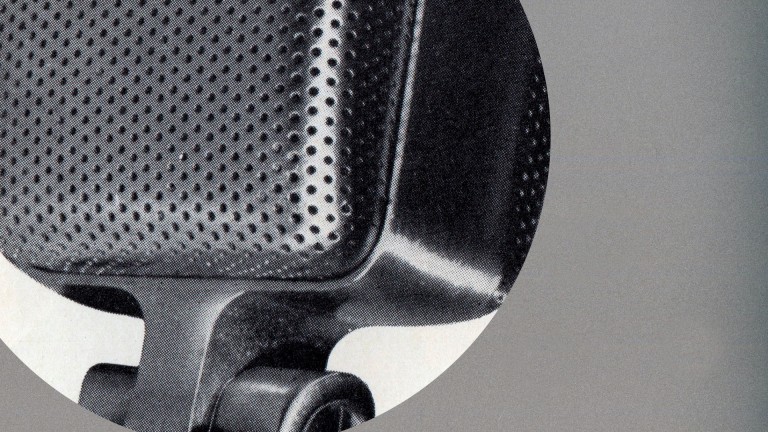From 1951 to 1960: The swing influence
Eyes were trained overseas, opening the doors to jazz and the evolution of the orchestras. Sanremo and the television changed society, outlining the features of the new epoch.
The 1950s in Italy were characterized, musically, by orchestras. The jazz approach and the link with classical music held back, even in Bologna, the change that was to be imposed by the USA and the UK during the following decade, with the electrification of blues and the birth of rock'n'roll.
Dancing dominated, also culturally. It was an integral part of the reconstruction necessary for the country. In the city dance halls, people moved, by preference, to the strictly Bolognese rhythm of the Filuzzi, the polkas and mazurkas of which Leonildo Marcheselli, Romano Merighi, Carlo Venturi, Sergio Poluzzi and the young Ruggero Passarini were protagonists.
The Chalet dei Giardini Margherita, the Settimo Cielo, the Sporting Club in Galleria del Toro, the Gatto Nero, the Parco Verde and the Sala Sirenella were just a few of the dance halls that became the focal points for the local dissemination of music.
In 1951, the Festival di Sanremo was born and the Bolognese Nilla Pizzi was its unchallenged queen. “Grazie dei fiori” won the first edition, while she had an authentic triumph in 1952. Of her seven songs in the competition, “Vola colomba” won the first prize, “Papaveri e papere” came second and “Una donna prega” came third.
The first Festivals were principally dedicated to promoting the Casinò di Sanremo and tourism. Only three artists took part in the first edition and five in the second. To make up the competition, each artist presented several songs.
The Ente Italiano per le Audizioni Radiofoniche (EIAR) changed its structure radically, becoming RAI. Radio was predominant in Italy, and remained so for many years, though television reached Italy in 1954, changing musical dissemination profoundly.
Many artists famous until the early post war years were no longer in the forefront. These include the Bolognese Norma Bruni, interpreter in the 1940s of the celebrated “Silenzioso slow”. She now shared the stage for a few concerts with Ariodante Dalla, a cousin of Lucio, but did not succeed in finding a new artistic dimension.
Another who emerged in the 1940s was Lucia Mannucci, with “Ho un sassolino nella scarpa”. She joined the Quartetto Cetra as the only female in the group, linking her artistic career to Felice Chiusano, Giovanni Giacobetti and Antonio Virgilio Savona, her husband.
In 1954, the year in which Giorgio Consolini triumphed with “Tutte le mamme”, the Quartetto Cetra took part in Sanremo with six songs, including “Aveva un bavero”. It was to be their last Festival on account of conflicts with certain authors, who were critical of the brilliant irony present in their interpretations.
A few years earlier, in 1951, Giuseppe Negroni recorded “Il vagabondo” for RAI. Negroni was discovered by Mario Bertolazzi, who was also from Bologna and composed for Gianni Morandi, the Quartetto Cetra, the Quartetto Radar, Enzo Jannacci and Giorgio Gaber in “I Due Corsari”. Negroni won several festivals and competitions, concentrating his career above all abroad and collaborating with the great jazz clarinettist Henghel Gualdi.
The immediate post-war years were also the backdrop to the beginning of the musical career of Vittoria Mongardi, who sang with Armando Fragna and Cinico Angelini’s orchestras, as did many other singers of the day. After her first success in 1950, “Sapevi di mentire”, she took part in the 1954 Festival di Sanremo. In 1955, during the first televised Festival, she sang the signature tune “Canzoni alla sbarra” with the Duo Fasano. In 1957, with this same duo, she won the Toronto Festival della Canzone Italiana with the famous song “Casetta in Canadà”.
Another outstanding female singer of this period was Marisa Colomber, who took part in the 1955 Sanremo Festival with “L'ombra”, written by the pianist and wordsmith Walter Colì. Coli also worked with Nilla Pizzi, Giorgio Consolini and Ariodante Dalla. Colomber, like many others, combined music with acting. She appeared in the films “Otto e mezzo” by Federico Fellini, “Con rispetto parlando” by Marcello Ciorciolini and in the mini-series “Scaramouche”, which also saw the participation of Domenico Modugno and Raffaella Carrà.
Italian teenagers of the 1950 were a far cry from those of Memphis in 1951, where the young Jackie Brenston and Ike Turner set in motion the season of rock'n'roll with “Rocket 88”. But the cultural evolution of the new decade could not be postponed much longer, least of all in Bologna.
In 1958, Domenico Modugno presented “Volare”. This song proposed a new language. It won Sanremo, the Eurovision Contest and was exported round the world. Everything was changing. The words were written by Modugno together with Franco Migliacci, who was to work alongside Gianni Morandi at RCA in some of his most important successes. This song sidelined tradition in favour of an approach that was new, freer and more expansive. The musical arrangement was coordinated by Alberto Semprini, who made the transatlantic influences, especially swing, his own, ushering in the style of the incoming decade.
Listen to the playlist

